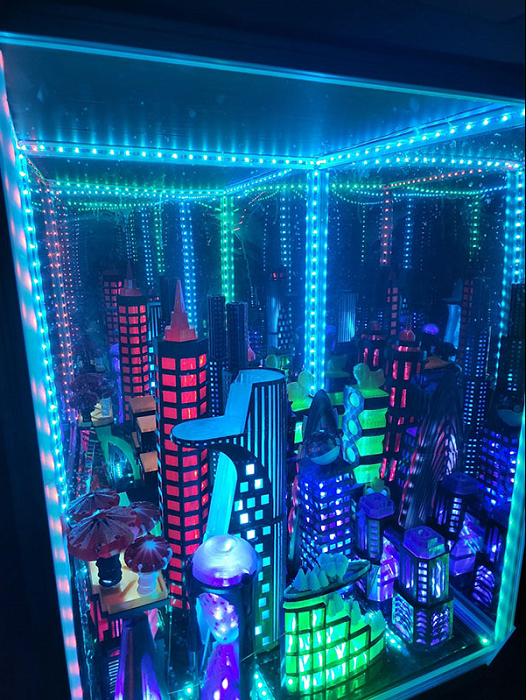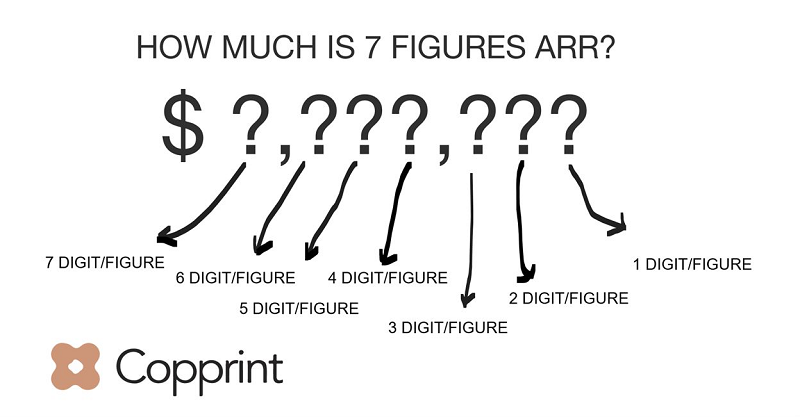Kicking things off in today’s 3D Printing News Briefs is a story focused on aviation, as two 3D printed cargo links represent the first U.S. Army-developed metallic 3D printed aircraft parts to be flown on Army aircraft. Moving on to business, Copprint announced a major order for its copper inks from a Fortune 500 company, and 3DEO has added a new core service to its offering. In construction news, Caracol AM 3D printed a giant sculpture out of recycled materials for an Italian company’s headquarters. Finally, high school students put their newly learned 3D printing skills to use when building an infinite city for a project.
AMNOW 3D Printed Hardware Being Flight-Tested by Army
The National Center for Defense Manufacturing and Machining (NCDMM) runs the multi-phased AMNOW Program, which is funded by the U.S. Army CCDC Aviation & Missile Center and is working to create a path for adopting additive manufacturing by inserting the technology into the supply chain to increase readiness. In addition to NCDMM, the program team is made up of The Barnes Global Advisors, Youngstown Business Incubator, Catalyst Connection, LECS Energy, Quotient, Advanced Engineering Solutions, GCA Coach, and the University of Alabama-Huntsville. It’s now been announced that two 3D printed cargo links, manufactured under the program, have been installed on two operational MH-47G aircraft at Fort Campbell, KY in support of an extended flight test program.
The cargo links, which were 3D printed from a high-strength aluminum alloy 7A77, represent the first metallic 3D printed aircraft parts developed by the Army to actually fly on Army aircraft. Team members AMNOW and the United States Army Combat Capabilities Development Command (DEVCOM) Aviation & Missile Center (AvMC) got plenty of help with these components from important team suppliers, including HRL of Malibu, California, which treated and supplied the 7A77 powder, and Knoxville, Tennessee’s Beehive Industries, which actually 3D printed the cargo links. Penn United Technologies in Cabot, Pennsylvania offered machining and finishing services, while Product Evaluation Systems in Latrobe, Pennsylvania took care of material testing. Finally, radiographic inspection was completed by Pinnacle Industrial X-ray Laboratory in Suwanee, Georgia.
Copprint Announces Major Copper Inks Order
Israeli AM nanotechnology company Copprint, which develops conductive nano copper inks for additive copper printing, has announced its first 7-figure, multi-ton order from an unnamed Fortune 500 company. The company’s fast, self-sintering inks make it possible to create environmentally friendly, highly conductive, low-cost, 3D printed electronics that can be embedded everywhere. According to Copprint founder and CEO Ofer Shochet, the order covers a 12-month supply that will be used in the customer’s production line, “with projected 10x growth in 2-3 years.”
“The software world uses the term ARR for annual recurring revenues. The materials/chemicals world should also be looking at ARR, given manufacturers’ conservative rate of change in specialty materials in production,” Shochet continued.
“Innovation in the materials world requires great patience. Achieving significant ARR takes years due to testing and approval cycles. We are proud to have achieved significant ARR.”
3DEO Adds Early-Stage DfAM to Core Services
High-volume metal 3D printing company 3DEO announced that it’s added early-stage Design for Additive Manufacturing, or DfAM, to its core services in order to offer better support throughout the product lifecycle. The company claims to be one of the only end-to-end design and manufacturing services that uses its own patented technology and automated platform to create consistently high-quality parts. The addition of DfAM to its core services will give 3DEO an even greater advantage in solving the needs of its customers, no matter their industry, and reach the goal of production at scale.
“3DEO is a company built on the pillars of innovation – by innovators and for innovators. This evolution in service offerings positions us as a premier, highly differentiated partner. We are unique not only because of the services we offer, but because our 3D printing platform is built with patented, proprietary technology. As a result, we have the ability to customize our technology platform to help our customers solve their hardest engineering challenges,” said Matt Sand, President and Co-Founder of 3DEO.
“We take a lot of pride in being a partnership-driven organization that works in concert with our customers to overcome difficult engineering problems. So adding design and engineering services seemed only natural to answer the call of our customers that need expertise in designing for additive manufacturing to gain a competitive advantage with innovative designs and breakthrough products.”
Caracol AM 3D Prints Giant Sculpture for Yamamay’s Global HQ
Italian company Yamamay, which specializes in producing and distributing beachwear, underwear, lingerie, and sleepwear products, is a fan of both innovative design and more sustainable manufacturing. So when the company wanted to freshen up its global headquarters, it called on fellow Italian firm Caracol AM to create and install a giant “Y” sculpture in front of the building in Gallarate, near Milan. The robotic LFAM company used 170 kg of 100% recycled polypropylene (PP) and a 3D printed concrete formwork to build the 2.7 meter wide, 4 meter tall structure, which it believes to be the world’s largest 3D printed logo. It took 200 hours and several months of work by multiple designers to create the 170 kg “Y” structure, which sits atop a concrete plinth made from a special 3D printed formwork that weights 1500 kg. A two-component protective paint was used to give the sculpture greater resistance to color changes and chemical agents.
“The collaboration between Caracol and Yamamay represents a virtuous example of dialogue between startups and corporate in our country, and symbolizes how the use of innovative technologies, typically of industrial derivation, they can also be used in the service of sectors such as art and architecture, close to the general public, and therefore important communication tools to transfer the values of sustainability and efficiency typical of these new manufacturing tools,” said Giovanni Avallone, Co-Founder and Chief Innovation Officer of Caracol AM.
High School Students Built 3D Printed Infinite City
 Tri-County Upward Bound students built a 3D printed infinity city. Image courtesy of Blue Tinsley.
Tri-County Upward Bound students built a 3D printed infinity city. Image courtesy of Blue Tinsley.Finally, Tri-County Upward Bound is a federally funded program in Tennessee that assists economically disadvantaged high school students in preparing for post-secondary education. One activity the free program offers is a six-week residential experience at Austin Peay State University, where the students live in dorms and take classes in math, lab science, literature, and writing. This year, thanks to a grant from the Tennessee Higher Education Commission, some of them also took a 3D printing class, and not only earned two certificates, but also teamed up to create a block of LED-illuminated buildings inside a mirrored box called an infinite city, using a belt 3D printer. The university purchased 3D printers for the class, which will later be donated to the participating school systems; the schools will also be provided with plenty of supplies, as well as a teacher training workshop. The students learned the basics of the technology during the first week of class, and by the end of the last week, presented their futuristic 3D printed city, after which they got to keep the buildings from the creative project. According to the participants, the program, and classes like the 3D printing one, definitely help prepare the students for college, but in a fun, creative way.
“I’m working on Doofenshmirtz Evil Incorporated (from the Disney show “Phineas and Ferb), and it’s kind of challenging because the building is sloped on three of the four sides, and you have to get the lines going down these sides. It’s challenging, but it’s fun,” said Tri-County Upward Bound participant Bo Hall, an incoming senior at Cheatham County Central High School.
Subscribe to Our Email Newsletter
Stay up-to-date on all the latest news from the 3D printing industry and receive information and offers from third party vendors.
You May Also Like
Gorilla Sports GE’s First 3D Printed Titanium Cast
How do you help a gorilla with a broken arm? Sounds like the start of a bad joke a zookeeper might tell, but it’s an actual dilemma recently faced by...
Nylon 3D Printed Parts Made More Functional with Coatings & Colors
Parts 3D printed from polyamide (PA, Nylon) 12 using powder bed fusion (PBF) are a mainstay in the additive manufacturing (AM) industry. While post-finishing processes have improved the porosity of...
$25M to Back Sintavia’s Largest Expansion of Metal 3D Printing Capacity Since 2019
Sintavia, the digital manufacturing company specializing in mission-critical parts for strategic sectors, announced a $25 million investment to increase its production capacity, the largest expansion to its operations since 2019....
Velo3D Initiates Public Offering in a Bid to Strengthen Financial Foundations and Drive Future Growth
Velo3D (NYSE: VLD) has been among a number of publicly traded 3D printing firms that have attempted to weather the current macroeconomic climate. After posting a challenging financial report for 2023,...



































